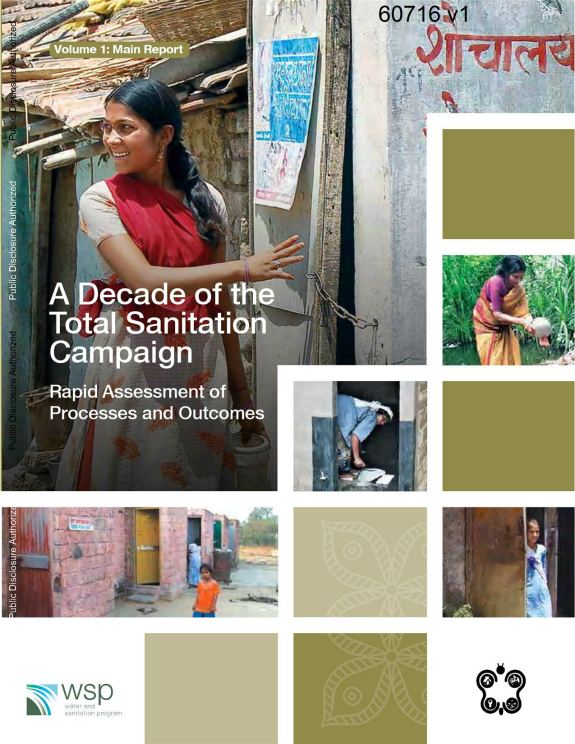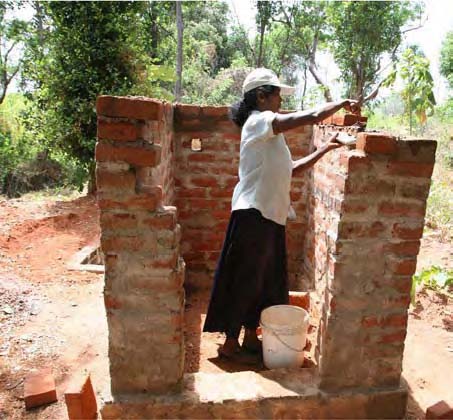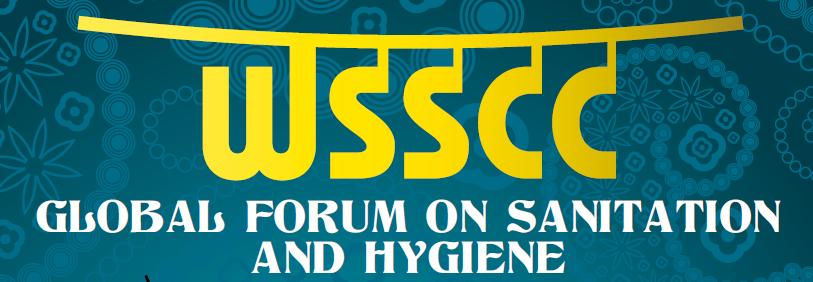Sanitation
A decade of the Total Sanitation Campaign : Rapid assessment of processes and outcomes A report by the World Bank
Posted on 22 Nov, 2014 10:30 AM This report by the Water and Sanitation Program (WSP), The World Bank analyses primary and secondary data from the Total Sanitation Campaign (TSC) of the Government of India, which has been in operation for over a decade (1999 to date).
This report by the Water and Sanitation Program (WSP), The World Bank analyses primary and secondary data from the Total Sanitation Campaign (TSC) of the Government of India, which has been in operation for over a decade (1999 to date).
The audience for this report includes policy-makers and implementers at national, state and district levels, and the broader sanitation and hygiene community. The report aims at gaining an understanding of the processes, outputs and outcomes of the campaign at a national level and across the states as compared with the inputs that have gone into the program.
The report draws on these indicators, which are then compared individually and in combination to benchmark the states, to understand the relative performance of the states. This benchmarking, based on a combination of eight indicators, is undertaken for both states and districts across the country.
Equity and inclusion in sanitation and hygiene in South Asia A regional synthesis paper WSSCC UNICEF and WaterAid
Posted on 22 Nov, 2014 10:30 AMThis working paper by the Water Supply and Sanitation Collaborative Council (WSSCC), UNICEF and WaterAid highlights the fact that a staggering 716 million men, women and children defecate in the open every day, in South Asia, contributing to the most appalling concentration of poverty and disease and the poorest standards of hygiene in the world.
Sanitation in India- Progress differentials correlates and challenges: A report by ADB
Posted on 22 Nov, 2014 10:30 AMThis report by Asian Development Bank (ADB) deals with sanitation in India, in particular the progress, differentials, correlates, and challenges. Improved sanitation is essential to reduce ill health, child mortality, lost income associated with morbidity, and to improve environment, human dignity, and quality of life. Goal 7, target 3 of the Millennium Development Goals (MDGs) stipulates decreasing the proportion of population without sustainable access to basic sanitation by 50 per cent in the year 2015.
Indias sanitation for all - How to make it happen- A discussion paper by Asian Development Bank
Posted on 22 Nov, 2014 10:30 AM This discussion paper by the Asian Development Bank (ADB) examines the current state of sanitation services in India and offers recommendations that can help key stakeholders work toward universal sanitation coverage in India.
This discussion paper by the Asian Development Bank (ADB) examines the current state of sanitation services in India and offers recommendations that can help key stakeholders work toward universal sanitation coverage in India.
Providing environmentally-safe sanitation to millions of people is a significant challenge, especially in the world’s second most populated country. The task is doubly difficult in a country where the introduction of new technologies can challenge people’s traditions and beliefs.
This discussion paper examines the current state of sanitation services in India in relation to two goals—Goal 7 of the Millennium Development Goals (MDGs), which calls on countries to halve, by 2015, the proportion of people without improved sanitation facilities (from 1990 levels); and India’s more ambitious goal of providing “Sanitation for All” by 2012, established under its Total Sanitation Campaign.
Live feed WSSCC Global Forum on Sanitation Hygiene 914 October 2011 Mumbai
Posted on 22 Nov, 2014 10:30 AM
We all know the statistics: 2.6 billion people around the world are without access to a basic toilet. Diarrhoea – the vast majority of it due to poor sanitation and hygiene – is the second biggest killer of children worldwide.
Between us, we also have many of the answers. We have experiences of low-cost technologies that are acceptable and affordable for poor communities in rural areas. We have been involved in designing communications programmes that have contributed to sustained behaviour change.
We have seen governments and civil society working together to set up policies and programmes that ensure access to better sanitation in challenging settings, such as crowded informal settlements in fast-growing megacities. We have also seen businesses grow up around sanitation and hygiene, allowing individuals to make a dignified living and clients to buy the sorts of products and services they want and need.
Social exclusion and policy recommendations for the 12th Plan WASH News and policy update
Posted on 22 Nov, 2014 10:30 AMContent courtesy: India WASH Forum
Women and water: A collection of papers Economic and Political Weekly Volume XLVI Number 18 April 30 2011
Posted on 22 Nov, 2014 10:30 AMIt does this in the context of the new decentralised governance structures that are based on the assumption that domestic water supply is the legitimate domain of women and thus power and authority needs to be granted to women to manage water resources.
However, there is a very little understanding of how this has benefited women and what are the challenges experienced during the process of implementation or the outcomes gained from these processes, in the context of the Indian society that continues to propogate patriarchal values and is based on structures that are inherently hierarchical and inequitable.
Some of the papers dwell on and explore the inherent biases in the literature and make an attempt to understand their implications for women in managing water resources, while some of the papers share case studies on the outcomes of the implementation of the decentralised water management policies at the village level.
Cost effective urinals established for Musiri Boys High School Trichy : A casestudy of UNICEF IITDelhis project SCOPE
Posted on 22 Nov, 2014 10:30 AMGuest post by: SCOPE
Forwarded to the Portal by: Ramesh Sakthivel
Per capita water availability to reduce by 2025 says Droplets eNewsletter from Everything About Water August 2011
Posted on 22 Nov, 2014 10:30 AMArticle and Image Courtesy: Everything About Water
Highlights from the August edition of Droplets e-newsletter published by the Everything About Water
- India: Per capita water availability to reduce by 2025
- WHO: New guidelines for safer drinking water supply systems





